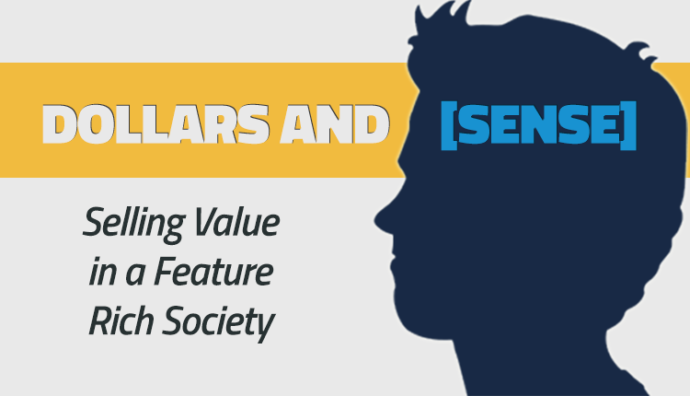People don’t want to buy a quarter-inch drill, they want a quarter-inch hole.
~ Theodore Levitt
Mr. Levitt is credited with (among other things) giving us this popular anecdote, succinctly explaining that buyers aren’t interested in the ways and means, they’re interested in the end result.
With technology becoming more and more ingrained into business processes, sales teams have begun to mimic the sales techniques of their IT providers – offering features, versus benefits and values. For those that may not be familiar with the distinction between the two, here’s a quick lesson – features talk about the product or service; while benefits talk about the gains or results the end-user will receive from using the product or service. More simply put, features focus on you, while benefits focus on your prospective clients.
The biggest challenge that I come across when consulting with new clients is that they tend to blur the line between features and
More so, features only tell half of the story – a car that gets 40mpg’s is great, but that’s a feature; Saving money by not having to buy as much as is the benefit. Features drive value, and not going the extra mile (all puns intended) actually sells your product or service short.
Focusing on a value-driven approach can yield tremendous benefits. First, this approach puts the prospect first, creating more sales – after all, you are focusing on why saying yes is in their best interest. A tertiary benefit is that it will also help to decrease the number of objections you receive – and what salesperson would have an issue with fewer rebuttals in their day?
Selling value is extremely simple from a top line perspective, but the difficulty is breaking old habits to focus on concise values.
Here’s some food for thought that I share with every client: What are 3 of your best features, and how can you position them as a value?

